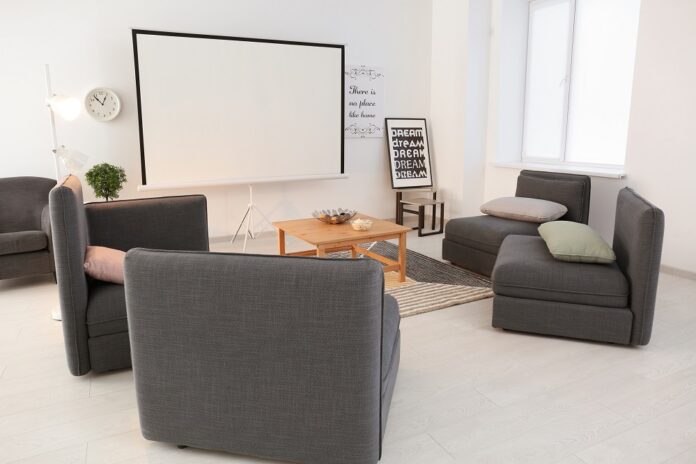Creating the ideal home theater experience can be a process, especially if you have specific tastes or desires you’re hoping to cater to. It’s not just about picking the best equipment or furniture, but also about understanding the elements of a home theater that come together to create a completely immersive experience. A decent home theater has more than just great speakers and a large screen, it also has sound that comes from every direction, lighting that matches the scene, and the ability to keep you comfortable the entire time you’re enjoying the movie. Almost like a regular theater.
To achieve this type of home theater experience, you need to understand it’s key components. Such as comfortable seating, three-dimensional sound, realistic lighting, and a responsive environment. With an immersive home theater, every detail is accounted for from the moment you enter to when you exit.
Comfortable Seating
When planning a home theatre, comfort should be a top priority. After all, what’s the point of having your own private cinema if you’re not going to be able to relax and enjoy it? The first step is to choose the right seating. A great option for larger rooms are couches that are perfect for your comfort level, whether that be plush and soft or firm and supportive. Either way, a couch offers a more relaxed, casual feel that works well for movies and TV shows.
On the other hand, Recliners are a popular choice for home theaters, as they allow you to kick back and put your feet up. But if you’re limited on space, bean bag chairs or floor cushions can also provide plenty of comfort.
No matter what, just make sure to choose materials that won’t absorb sound, like leather or microfiber. And if you really want to go all out, consider adding a massage function to your recliner! With the right seating in place, you’ll be able to kick back and enjoy your home theater in complete comfort.
Three-Dimensional Sound
The ideal home theater experience is one where the viewer feels completely immersed in the film or show they are watching. This sense of immersion is largely due to the sound quality, which should make it feel as though the action is happening all around them. To achieve this three-dimensional sound, speakers should be placed strategically throughout the room.
Floor speakers and ceiling speakers are the two most common types used in home theater systems. Floor speakers sit on the ground and send sound straight up, filling the room with multiple sound sources. These are best suited for large rooms. Ceiling speakers, on the other hand, direct sound straight down at the viewer. This makes them a good option for smaller rooms where floor space might be limited.
Realistic Lighting
When planning the lighting for a home theater, there are several factors to consider. The first is the size of the room. A small room will require less light than a large one. Second is the type of lighting desired. Ambient lighting, which provides general illumination, is important for safety and finding your seat in the dark. However, it can create glare on the screen. Task lighting, which is focused on a specific area, can reduce glare and provide more light for reading programs or taking notes during movies. Third is the color of the lighting. Warm white light is best for relaxing, while cool white light is more energizing. Finally, consider the intensity of the light. Too much light can be harsh and cause eye strain, while too little light can make it difficult to see what’s on the screen. With these factors in mind, you can choose the right lighting scheme for your home theater.
Responsive Environment
The environment surrounding your home theater is just as important as the visuals on the screen. The smell of fresh popcorn, the sound of crickets chirping outside, or the sight of falling snow can enhance your viewing experience. Make sure that you have the necessary equipment to control all aspects of your environment. This includes things like the temperature and lighting, but also the sound. With a surround sound system, you can control the volume of each speaker. You can also use this system to play specific sounds, such as crickets, cicadas, wind, water, or rain.
An immersive home theater isn’t just a dream for some far off day. You can make it a reality today. With the right essential elements, you’ll have a beautiful, immersive home theater in just a few days or weeks. Grab the popcorn, a cold drink, and put in your favorite movie!















